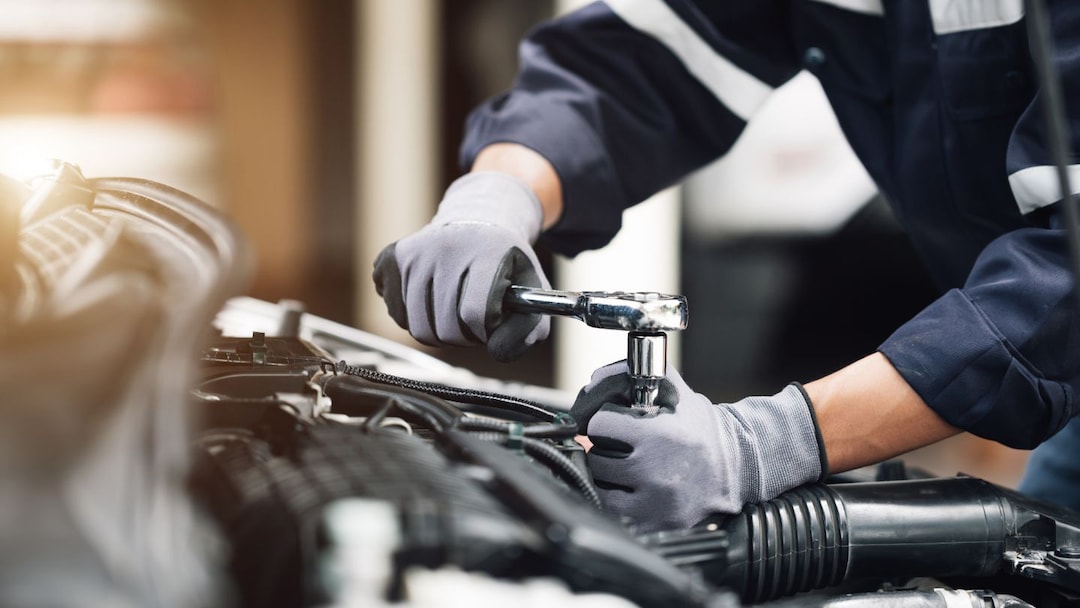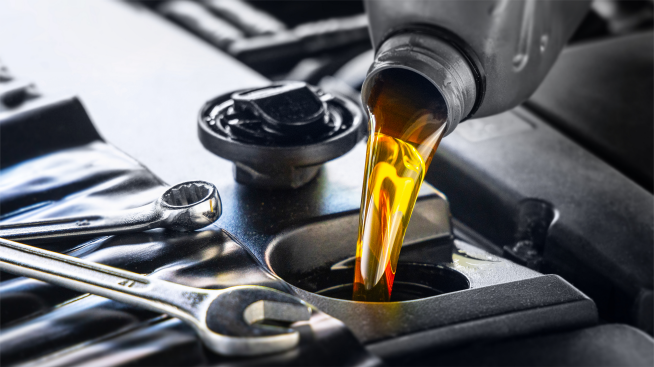What is a car transmission?

A car’s transmission is a complex and critical component of the car’s drivetrain that controls the application of power from the internal combustion engine to the car’s wheels. Essentially, it’s what allows your car to physically move. If you’re an experienced driver, you may already know that car transmissions can come as manual or automatic — but what does a car transmission do? Let’s shift gears into drive and learn the basics.
The basics of car transmissions
Simply put, your car’s transmission works in conjunction with its engine to regulate the amount of torque (rotational force) that’s being transferred from the car’s internal combustion engine and converted into physical momentum through the car’s wheels. The transmission may well be one of the most critical components of your car. Without it, your engine would have nothing harnessing its power.
While the composition of a car’s transmission system may be slightly different between automatic and manual variations, both have gears, output shafts and input shafts. Most transmissions will have five or six gear sets and one reverse gear that are connected through a series of gear trains (which could be described as connecting belts).
Each gear will have a different gear ratio, which may be best described as their circumferences. These ratios are what make one gear spin faster than another, as smaller gears need to spin more to cover the same distance as a larger one. As you accelerate, your transmission (or you, manually) will shift between these varying gear ratios to change the amount of power it needs to deliver to your car.
What does the car transmission do?
A car’s transmission maximizes an engine’s efficiency to reduce its fuel consumption, while still ensuring power is generated and transferred effectively.
When you first press on the gas, like after waiting at a stop sign, your car’s transmission will use a lower gear ratio, which will transfer enough torque at a lower rotation per minute (RPM) to accelerate efficiently. If you need to reach a higher top speed, like on a highway, your transmission will use a gear with a higher gear ratio to power your car at a higher speed while keeping the engine’s RPM as low as it can.
Manual vs. automatic transmissions
As we've learned, car transmissions can come as either manual or automatic. Automatic transmissions tend to be more efficient as they use sensors that allow the transmission system to change gear more efficiently. Automatic transmissions may be commonly seen in modern cars in the U.S., and their main operational difference is that manual transmissions require you to operate a clutch, while an automatic transmission requires only the gas pedal while you drive. With an automatic transmission, your car’s transmission will change gears mechanically on its own as your driving conditions change.
Where is the transmission in a car?
Your car’s transmission is almost always mounted directly to your car’s engine so that the attached belt and gear system can convert combustion power directly from the source.
In a manual transmission car, the gear lever you’ll use to shift gears will likely be between your driver and passenger seats (or sometimes attached to the steering wheel). The clutch pedal you’ll also be using is most likely going to be placed to the left of your brake pedal.
How does a car transmission work?
Your car’s transmission is a gearbox and works essentially the same way regardless of whether your car has a manual or automatic transmission. That said, there is a slight difference that may be especially important to know if you ever need to drive a car that has an unfamiliar transmission system.
Manual transmission
Using a manual transmission requires you, as a driver, to use a gear shifter and a clutch pedal. The process to operate a manual transmission car is different and might take some practice to get the hang of. Here’s what that process looks like:
- As you drive, you’ll operate a gear lever (the physical “stick” typically located in-between your driver and passenger seats or behind the steering wheel) and clutch pedal to shift between gears.
- To shift gears, you’ll firmly push down the clutch pedal, which disconnects the engine from the input shaft. Then, you’ll physically engage your gear lever to shift out of the gear your car is currently in, which will cause the gears on the input shaft to move and disconnect power between the transmission and engine.
- While the clutch pedal is still pressed down, you’ll move the shift lever, select your new gear and release the clutch after, reconnecting power between the input shaft and engine and transferring power back to your wheels.
Automatic transmission
With an automatic transmission, you aren’t required to physically shift your car between gears like you would with a manual. Typically, this type of transmission system doesn’t have a clutch pedal either — instead, it may use built-in sensors and processers to shift gears as you change speeds.
Maintaining your car transmission
Because of the crucial role a car’s transmission plays in your car's operational capabilities, it may be an especially important component to maintain. Without a healthy transmission, your engine may undergo excess strain, which could lead to deterioration and eventual failure. Staying on top of a routine maintenance schedule will likely be the best way to help prolong the life of a car transmission.
In summary
Your car’s transmission can be simply understood as a mechanical system that regulates how much power generated from torque is transferred from your car’s engine to its wheels. It may be an especially important component to maintain, as its role is to maximize your engine's fuel efficiency and prevent it from overworking itself. And, while manual and automatic transmissions work to achieve the same function, manual transmissions require you to physically shift gears as you drive and may come with a learning curve.



